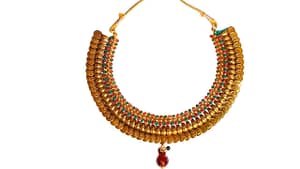Invertebrates in Reef Tanks: Adding Diversity and Balance to Your Aquatic Ecosystem
Invertebrates play a vital role in reef tanks, adding diversity and contributing to the balance of your aquatic ecosystem. From colorful shrimp to fascinating snails, these creatures bring life and character to your underwater world. To add more, led reef aquarium lighting plays a crucial role in supporting the health and activity of invertebrates in your reef tank. It offers customizable color spectrums that can enhance the natural colors of your invertebrates, creating a visually stunning display.
Studies by Johnson et al. (2021) emphasize the importance of proper lighting in maintaining the well-being of invertebrates, especially those with symbiotic relationships with photosynthetic algae. In this article, we’ll explore the importance of invertebrates in reef tanks and discuss how they enhance the overall health and vibrancy of your aquarium.
The Role of Invertebrates

Invertebrates encompass a wide range of species, including crustaceans, mollusks, and echinoderms, each with unique characteristics and functions within a reef tank. They serve multiple roles that contribute to the ecosystem’s balance:
- Algae Control: Invertebrates like hermit crabs, turbo snails, and sea urchins help control algae growth by grazing on algae-covered surfaces, keeping them clean, and preventing overgrowth that can harm corals.
- Detritus Removal: Detritivores such as cleaner shrimp, brittle stars, and certain snails consume organic debris and leftover food, maintaining water quality and reducing nutrient buildup.
- Sand and Substrate Maintenance: Burrowing invertebrates like sand-sifting starfish and conch snails help aerate and stir the substrate, preventing anaerobic pockets and promoting nutrient cycling.
- Coral Health: Certain invertebrates, such as cleaner shrimp and peppermint shrimp, contribute to coral health by removing parasites and dead tissue, promoting a cleaner and healthier reef environment.
- Bioturbation: Burrowing and moving invertebrates play a role in bioturbation, which helps mix sediments, release trapped gases, and support nutrient exchange in the substrate.
Adding Diversity and Balance

Introducing a variety of invertebrates to your reef tank enhances biodiversity and creates a more dynamic and natural ecosystem. Consider including a mix of species with different feeding habits, behaviors, and roles:
- Clean-Up Crew: Comprising snails, hermit crabs, shrimp, and small sea cucumbers, a clean-up crew helps maintain a clean and algae-free tank while promoting nutrient cycling.
- Coral Safe Invertebrates: Choose invertebrates that are compatible with corals and other tank inhabitants to avoid conflicts and ensure harmonious coexistence.
- Reef-Safe Predators: Some invertebrates, like certain types of starfish and wrasses, can act as natural predators for pests like bristle worms and flatworms, contributing to pest control without harming corals or fish.
Care Tips for Invertebrates

- Proper Acclimation: Gradually acclimate new invertebrates to your tank’s water parameters to minimize stress and ensure a smooth transition.
- Feeding: Provide appropriate food sources for each invertebrate species, including algae wafers, sinking pellets, and occasional live or frozen foods to meet their nutritional needs.
- Compatibility: Research compatibility between invertebrates and other tank inhabitants to prevent aggression, predation, or territorial conflicts.
- Monitoring: Regularly observe invertebrates for signs of stress, illness, or injury, and take prompt action if any issues arise.
Invertebrates are valuable additions to reef tanks, …
















 Market research is an essential first step before releasing your music online. You need to identify the market you want to target, their interests, and how they consume music. Understanding these factors will enable you to tailor your marketing campaign effectively. Start by researching similar artists in your genre who have successfully released music online.
Market research is an essential first step before releasing your music online. You need to identify the market you want to target, their interests, and how they consume music. Understanding these factors will enable you to tailor your marketing campaign effectively. Start by researching similar artists in your genre who have successfully released music online.

 PR can help to increase the overall sentiment around your brand. This is done by creating positive media coverage, managing negative press, and increasing awareness of your brand through thought-leadership and earned media. It leads to a more favorable view of your company, which can ultimately lead to more customers and sales.
PR can help to increase the overall sentiment around your brand. This is done by creating positive media coverage, managing negative press, and increasing awareness of your brand through thought-leadership and earned media. It leads to a more favorable view of your company, which can ultimately lead to more customers and sales. Credibility is essential for any brand, and PR can help build it. When your company is featured in the positive press or you’ve seen as a thought leader in your industry, people are more likely to trust you and do business with you. It is because they see you as someone they can rely on. PR can also help build relationships with key influencers, further increasing your credibility.
Credibility is essential for any brand, and PR can help build it. When your company is featured in the positive press or you’ve seen as a thought leader in your industry, people are more likely to trust you and do business with you. It is because they see you as someone they can rely on. PR can also help build relationships with key influencers, further increasing your credibility. PR can help you to connect with your target audience in a more meaningful way. This is done by crafting messages that resonate with them and placing your brand in front of them through earned media placements. In addition, PR can also help you build relationships with key influencers who can reach your target audience on your behalf. These connections are essential for any brand that wants to succeed.
PR can help you to connect with your target audience in a more meaningful way. This is done by crafting messages that resonate with them and placing your brand in front of them through earned media placements. In addition, PR can also help you build relationships with key influencers who can reach your target audience on your behalf. These connections are essential for any brand that wants to succeed.
 If you do not have a deep fryer, we recommend purchasing one. Waldorf fn8120g deep fryer is the best deep fryer in the market. It is very easy to use, and it has a lot of features that will make your frying experience easier. A quality deep fryer will make it easier to control the temperature of the oil, which is crucial for perfect frying. A deep fryer will also prevent hot oil from splattering all over your stovetop. This is why a deep fryer is a worthwhile investment, particularly if you enjoy fried foods.
If you do not have a deep fryer, we recommend purchasing one. Waldorf fn8120g deep fryer is the best deep fryer in the market. It is very easy to use, and it has a lot of features that will make your frying experience easier. A quality deep fryer will make it easier to control the temperature of the oil, which is crucial for perfect frying. A deep fryer will also prevent hot oil from splattering all over your stovetop. This is why a deep fryer is a worthwhile investment, particularly if you enjoy fried foods. Lastly, it is important to prepare your food properly before you start cooking. This means that you should cut your food into even pieces to cook evenly. Additionally, you will want to make sure that your food is dry before cooking. Wet food will cause the oil to splatter and can make your fried foods soggy. Many people think that coating their food in flour will help to make it more crispy. However, this is not the case. In fact, using flour will actually make your fried foods greasier. The best way to achieve crispiness is to use a breading made of cornstarch or rice flour. This will create a light and crispy coating that will not absorb too much oil.
Lastly, it is important to prepare your food properly before you start cooking. This means that you should cut your food into even pieces to cook evenly. Additionally, you will want to make sure that your food is dry before cooking. Wet food will cause the oil to splatter and can make your fried foods soggy. Many people think that coating their food in flour will help to make it more crispy. However, this is not the case. In fact, using flour will actually make your fried foods greasier. The best way to achieve crispiness is to use a breading made of cornstarch or rice flour. This will create a light and crispy coating that will not absorb too much oil.

 As we mentioned before, some roofing contractors also offer professional gutter cleaning services. It is a great way to keep your gutters clean and debris-free. A good gutter cleaner will be able to remove all of the leaves and other debris from your gutters, and they will also be able to inspect the gutters for any damage. If you let your gutter get too full of debris, it can cause problems, so it is essential to have them cleaned regularly.
As we mentioned before, some roofing contractors also offer professional gutter cleaning services. It is a great way to keep your gutters clean and debris-free. A good gutter cleaner will be able to remove all of the leaves and other debris from your gutters, and they will also be able to inspect the gutters for any damage. If you let your gutter get too full of debris, it can cause problems, so it is essential to have them cleaned regularly.
 Before purchasing any product, it is essential to read the labels of each product. Most dietary supplement manufacturers follow health claims and some products indicate that they can give powerful results more than they can do. Therefore, it is essential to look for past claims on the label and review the
Before purchasing any product, it is essential to read the labels of each product. Most dietary supplement manufacturers follow health claims and some products indicate that they can give powerful results more than they can do. Therefore, it is essential to look for past claims on the label and review the 
 engage in workouts that will help you attain the desired results fast. Try out exercises that target different muscle groups in your body. Your trainer can help you through this. Following these tips will help you get the desired results from your workouts.…
engage in workouts that will help you attain the desired results fast. Try out exercises that target different muscle groups in your body. Your trainer can help you through this. Following these tips will help you get the desired results from your workouts.…

 White backgrounds are among the most used in jewelry photography. And this trend can be justified by the fact that white naturally eliminates distractions, thus allowing your audience to focus on the subject matter. Ideally, this background communicates an aspect of objectivity, which is especially essential for a marketer trying to sell their jewelry online. The good thing about white background is that they are not complicated.
White backgrounds are among the most used in jewelry photography. And this trend can be justified by the fact that white naturally eliminates distractions, thus allowing your audience to focus on the subject matter. Ideally, this background communicates an aspect of objectivity, which is especially essential for a marketer trying to sell their jewelry online. The good thing about white background is that they are not complicated.


 Wedding planners also ease off the pressure from you because they work on everything. What you should do is give them your requirements and they will do everything possible to ensure your event is ready. No last-minute preparations will be experienced when you hire them. Hiring a good wedding planning service is essential for a successful occasion. Here are the things to consider when choosing one.
Wedding planners also ease off the pressure from you because they work on everything. What you should do is give them your requirements and they will do everything possible to ensure your event is ready. No last-minute preparations will be experienced when you hire them. Hiring a good wedding planning service is essential for a successful occasion. Here are the things to consider when choosing one. that may see your event flop. Get to know the schedule of the wedding planner you want to hire. They should be available all the time to plan your wedding and ensure everything is a success.…
that may see your event flop. Get to know the schedule of the wedding planner you want to hire. They should be available all the time to plan your wedding and ensure everything is a success.…
 Dogs are energetic creatures. Even if you are not as enthusiastic as your dog, you are the one who must change. Walking your dog may not look like a significant activity, not to you, perhaps, but to your dog, it can be the key to overcoming their stress.
Dogs are energetic creatures. Even if you are not as enthusiastic as your dog, you are the one who must change. Walking your dog may not look like a significant activity, not to you, perhaps, but to your dog, it can be the key to overcoming their stress.

 do your research paper. These are people who have the much-needed expertise for this job. They will choose the right topics and also follow the required procedures which they are all familiar with. You will earn more marks when you get your research paper done by a writer.
do your research paper. These are people who have the much-needed expertise for this job. They will choose the right topics and also follow the required procedures which they are all familiar with. You will earn more marks when you get your research paper done by a writer.
 When you are conducting your research, there is a lot of information you are asked to check and see whether they will suit your needs. First, you are required to check on the different styles that most photographers use and if they meet your needs, consider adding them on your list. You will start narrowing down your list as you continue with your research.
When you are conducting your research, there is a lot of information you are asked to check and see whether they will suit your needs. First, you are required to check on the different styles that most photographers use and if they meet your needs, consider adding them on your list. You will start narrowing down your list as you continue with your research.




 The size of the new home is perhaps one of the essential factors to consider. If you are moving with our family, then you must ensure that the unit is enough for all of you. On the other hand, if you are moving alone, you do not have to go to a big unit that you might not need. This will amount to being extravagant, and it is definitely not a good thing.
The size of the new home is perhaps one of the essential factors to consider. If you are moving with our family, then you must ensure that the unit is enough for all of you. On the other hand, if you are moving alone, you do not have to go to a big unit that you might not need. This will amount to being extravagant, and it is definitely not a good thing.
 There is nothing that feels good like when you see millions of visitors visit your website. Even if they do not buy, it makes you feel like you are almost there and this is good for giving you the morale that you need to keep going. SEO companies create quality content that is supposed to provide potential customers with the information that they need to make choices.
There is nothing that feels good like when you see millions of visitors visit your website. Even if they do not buy, it makes you feel like you are almost there and this is good for giving you the morale that you need to keep going. SEO companies create quality content that is supposed to provide potential customers with the information that they need to make choices.




